The Quills are a early American folk woodwind, first recorded in the early part of the 19th century among Afro-Americans in the south. There are at least two kinds of woodwinds called the quills: a cane fife with several holes, and a panpipe with several separate cane pipes. They are assumed to be of African origin, since similar instruments are found in various parts of Africa, and they were most common among 1st and 2nd generation Africans in America.
The Quills would probably be forgotten today if not for the extraordinary recordings by the entertainer and early bluesman Henry Thomas, made in the late 1920s. Alec Lomax and others have recorded other traditional players as well.
History
The Quills are first mentioned in early American plantation slave histories, some dating back to the late 1700s. At that time, the instrument appears to consist of two or more cane pipes, played for recreation and dancing, accompanied by “shouts, whoops and songs”. They are mentioned fairly often in oral histories but little structural and musical information has survived. Considering how popular and common they appear to have been, it is surprising that they are almost unheard of today. Quills were also used by free blacks in New Orleans in the 1800s. Two bluesmen recorded songs with the Quills in the 1920, and a rural folk tradition has survived to this day in the American south.
I’ve heard that the word “Quill” is an colonial American (and English) term for a hollow tube of any sort, but have been unable to confirm this.
Surviving African Traditions
A number of villages in Zimbabwe and Mozambique maintained a tradition of pan-pipe playing well into this century, and a few continue to play to this day.
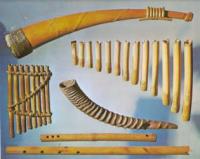 The earliest recordings of these ensembles are from the field recordings of Hugh Tracy, who traveled through southern Africa between 1935 and 1955, making a series of exceptional recordings of traditional music. His recordings are available from the International Library of African Music (ILAM). Some of these recordings are included in the collection Flutes and Horns, which can be previewed and ordered from this web site in South Africa: http://ilam.ru.ac.za/moa/moa030.htm. Some of these recordings bear a striking resemblance to the American recordings of Sid Hemphill.
The earliest recordings of these ensembles are from the field recordings of Hugh Tracy, who traveled through southern Africa between 1935 and 1955, making a series of exceptional recordings of traditional music. His recordings are available from the International Library of African Music (ILAM). Some of these recordings are included in the collection Flutes and Horns, which can be previewed and ordered from this web site in South Africa: http://ilam.ru.ac.za/moa/moa030.htm. Some of these recordings bear a striking resemblance to the American recordings of Sid Hemphill.
Another excellent recording is of African panpipes from Mozambique is “Traditional Music of Cancune, Mozambique“,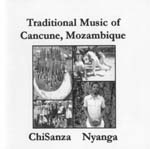
recorded by Joel Laviolette around the year 2000. Joel teaches how to make and play panpipes in this tradition at workshops around America, particularly at Zimfest. Currently, traditional instruments in this style are made out of plastic plumbing tubing, softened over a fire and worked by hand, rolling the end of the pipe until the pitch is correct.
Southern African nations never had a substantial slave trade with the United States, and so it is unlikely that the tradition came directly from these tribes in southern Africa. The instrument may have had greater spread in west Africa in previous centuries and died out or was not documented before modern times.
Are there any original surviving quills?
Lomax reports that when he revisited some of the locations where he had recorded Quills players, the tradition had pretty much died out. I hope that there are still some players from that tradition, and the skills of making sets of quills has not died out entirely, however I am not aware of any.
I also hope that older instruments still exist. It seems reasonable to think that these instruments survive, perhaps still kept in the family of the players, and perhaps in small museums in the south. If you know of the location of any, please let me know!
I was told by banjo scholar Scott Odell that the collection in the Smithsonian once contained a set of Quills that had been donated in the late 1800s along with a Mountain Dulcimer. Its current whereabouts is unknown, and it may have been lost.
Players
Only a few players have been recorded playing an instrument called the quills prior to the folk revival.
- Big Boy Cleveland, Gennet 1927.
- Henry Thomas, Vocalion 1927 and 1929.
- Sid Hemphill, recorded by Alan Lomax in 1942.
- Alec Askew, recorded by Alan Lomax in 1942.
- Othar Turner, who played and made cane flute style instruments for the Smithsonian folk festival on the mall in Washington DC.
Big Boy Cleveland
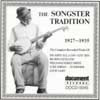 Cleveland’s Quills Blues can be heard at this site: Document Records (search for “The Songster Tradition 1927 – 1935”.
Cleveland’s Quills Blues can be heard at this site: Document Records (search for “The Songster Tradition 1927 – 1935”.
It is likely that Cleveland is actually playing the cane fife (also called the quills).
For more information on the cane fife, see the following pages on folkstreams.net:
- Black Fife and Drum Music in Mississippi.
- Othar Turner, Cane Fife Maker.
- and the short film Gravel Springs Fife and Drum.
Sid Hemphill and Alec Askew
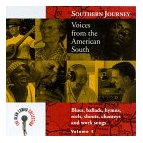 Sid Hemphill and Alec Askew were recorded by Alan Lomax, and their playing is included in the Alan Lomax collection, Southern Journey, Vol. 1. A clip of Hemphill’s playing can be heard on Amazon.com’s page for this recording. Another interesting recording is Traveling Through the Jungle, which features a different performance by
Sid Hemphill and Alec Askew were recorded by Alan Lomax, and their playing is included in the Alan Lomax collection, Southern Journey, Vol. 1. A clip of Hemphill’s playing can be heard on Amazon.com’s page for this recording. Another interesting recording is Traveling Through the Jungle, which features a different performance by 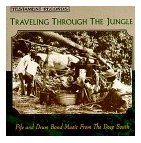 Hemphill.
Hemphill.
There is another recording from Alan Lomax’s field recordings featuring Alec Askew playing the “4 hole quills”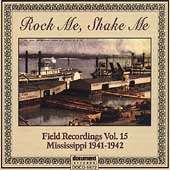 included on the Document CD Field Recordings Vol 15 (DOCD 5672), where Lomax asks Askew to play the individual notes–this makes analysis easy, and I’ve included the tuning of this set of pipes in the article Reconstructing the quills.
included on the Document CD Field Recordings Vol 15 (DOCD 5672), where Lomax asks Askew to play the individual notes–this makes analysis easy, and I’ve included the tuning of this set of pipes in the article Reconstructing the quills.
Henry Thomas
By far, the most information we have about this instrument comes from the early blues recordings by Henry Thomas. I became interested in the Quills because I study woodwinds, and some friends who listen to (and play) a lot of early blues played Thomas’s “Bull doze Blues” for me. That’s about all it took–Thomas’s music is so strong and vibrant, even through the medium of a 78rpm recording, that I was hooked. We started to discuss what it would take to build a set of pan-pipes as close to Thomas’s as we could.
Thomas left little in the way of documents about his life, and no sets of his instruments have survived. I’ve heard that some instruments cataloged as Quills can be found in small, southern museums, and I have heard a rumor that a set of quills was donated to the Smithsonian in the late 1800’s along with a dulcimer. The quill’s whereabouts are currently unknown however.
What this means is that we are left to apply some of the techniques that I’ve learned to reconstruct historical European woodwinds. In this case, there are no pictures to go by, but in this case we have something much more valuable, actual recordings of the instrument.
During his recording career, Henry Thomas made eight known recordings using the quills for Vocalion, recorded in 1927 and 1929.
- John Henry
- The Fox and the Hounds
- The Little Red Caboose
- Red River Blues
- Bull Doze Blues
- Fishing Blues
- Old Country Stomp
- Charmin’ Betsy
- Railroadin’ Some
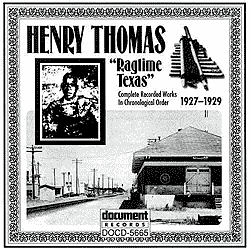 These recordings can be heard on two collections: Texas Worried Blues (Yazoo), and Ragtime Texas (Document).
These recordings can be heard on two collections: Texas Worried Blues (Yazoo), and Ragtime Texas (Document).
Some clips can be heard on the Amazon site for both these recordings, including several tracks that feature the Quills. Some of these, such as Bulldoze Blues, and Fishing Blues have become blues classics.
How do I get a set of Quills?

A self made set of quills
As far as I (or anyone else I’ve asked knows) you make it. African players make their own instruments, and I imagine that Henry Thomas did as well. Cane does not survive well, and there are no known surviving panpipe style instruments from the old days.
Fortunately, we have a great deal of information in the form of audio recordings, which we can study to determine fairly precise measurements that will allow us to reproduce the instrument that Thomas played. We can learn a great deal about the instruments from these recordings.
I did some research on that subject which can be found in the article Reconstructing the quills.
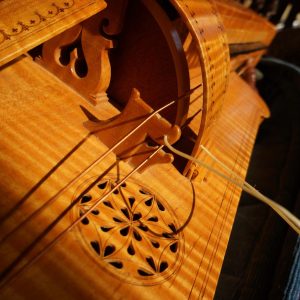
Are you still looking for actual Cane Break’? I live in Austin Texas, I have made several sets of quills out of the canebrake growing along the canals in and around town. There’s more than enough raw supplies to go around. I have found that the dried stems from the year before that I’ve turned gray have the best sound. Although quite fragile, the older dried out plants with the thinnest walls Have the best tone and vibration. Feel free to contact me.
LikeLike